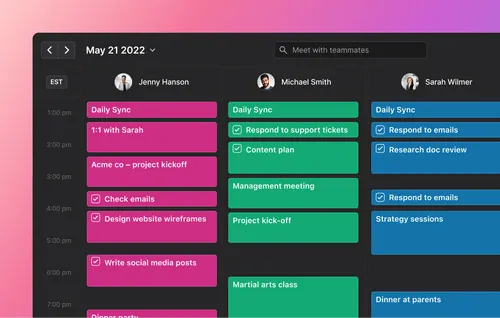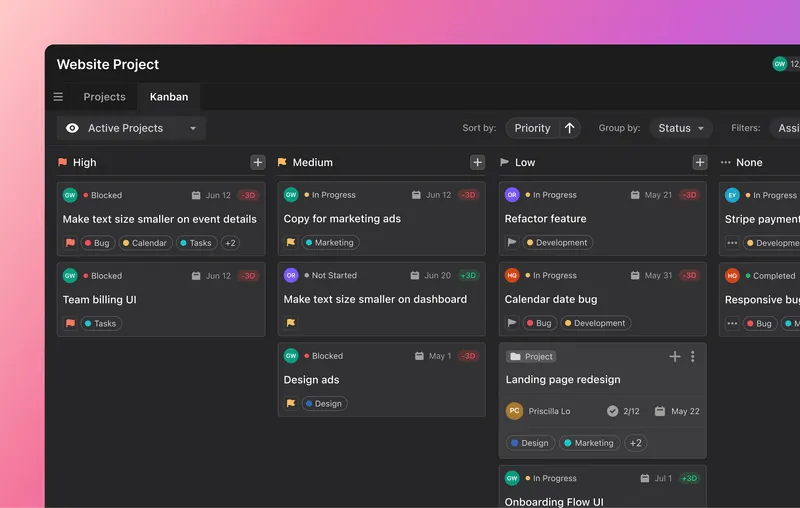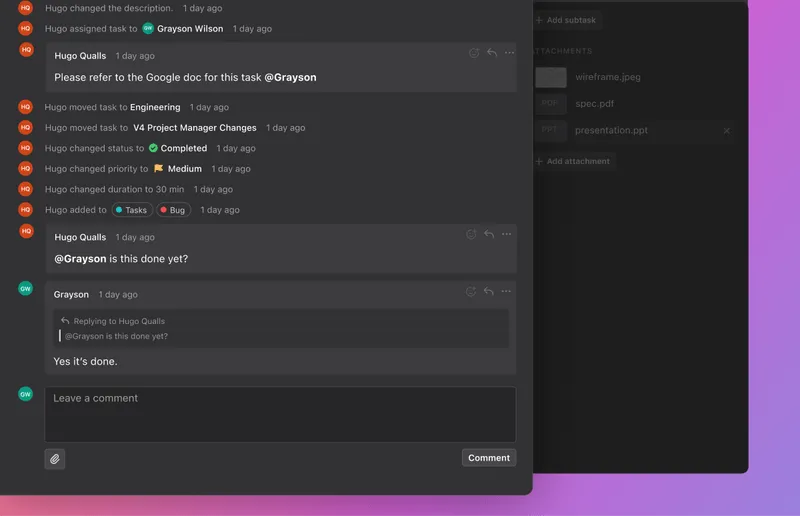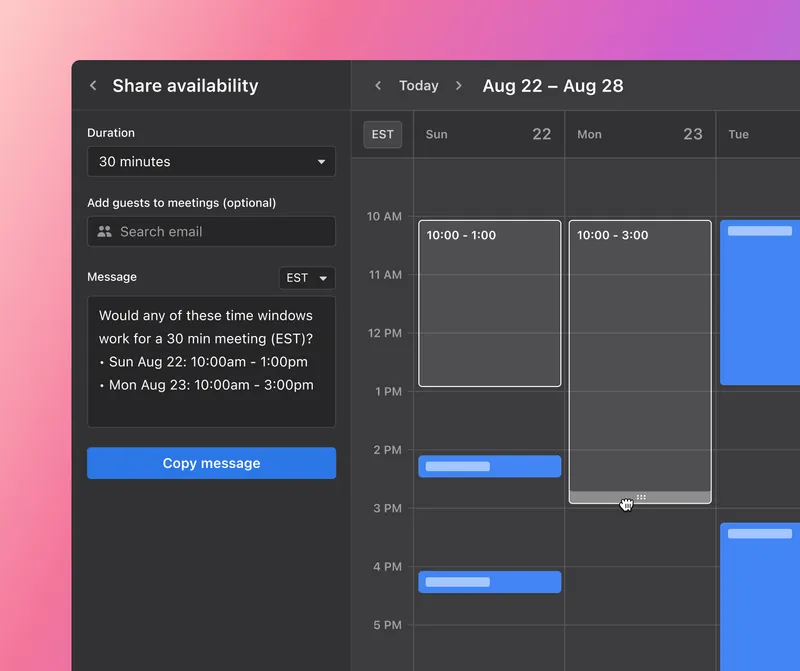Are you tired of endless spreadsheets, missed deadlines, and chaotic team coordination? Does managing your work and team take up too much time?
It’s time to take charge of your projects and revolutionize your approach to project life cycles. It’s time to use project life cycles to hit deadlines, eliminate endless spreadsheets, and coordinate like a dream.
In this comprehensive guide, we’ll explore the five essential phases of project life cycles. We’ll demystify each stage from initiation to closure, providing you with a clear roadmap for success.
But this isn’t just another run-of-the-mill project management (PM) tutorial.
You’ll discover practical strategies, actionable insights, and real-life examples. You’ll learn how Motion can make the project life cycle so much easier; you’ll wish you’d signed up yesterday.
Let’s harness the power of project lifecycles and embark on a journey toward project excellence.
What is a project management life cycle?
A project management life cycle is a structured framework that guides the management and execution of a project from start to finish. It encompasses a series of phases that provide a roadmap for project success. Each phase has its specific objectives, deliverables, and activities.
The five phases of the lifecycle are initiation, planning, execution, monitoring and control, and closure. These phases ensure that projects progress in an organized and controlled manner.
With a structured project life cycle, you can achieve several benefits:
- It provides a clear roadmap for project management
- Enhances coordination among team members
- Improves communication and decision-making
- Minimizes risks and uncertainties
- Increases the likelihood of project success
While the project life cycle provides structure, it allows flexibility and adaptability. This flexibility helps you respond to unforeseen challenges and make the necessary adjustments.
The project management life cycle can be seamlessly combined with various PM methodologies. These include Agile or Waterfall methods and the many Agile frameworks like Kanban and Scrum.
Master the 5 phases of the project life cycle
Using the 5 phases of a project life cycle, we can improve our approach to projects and better structure a way for success.
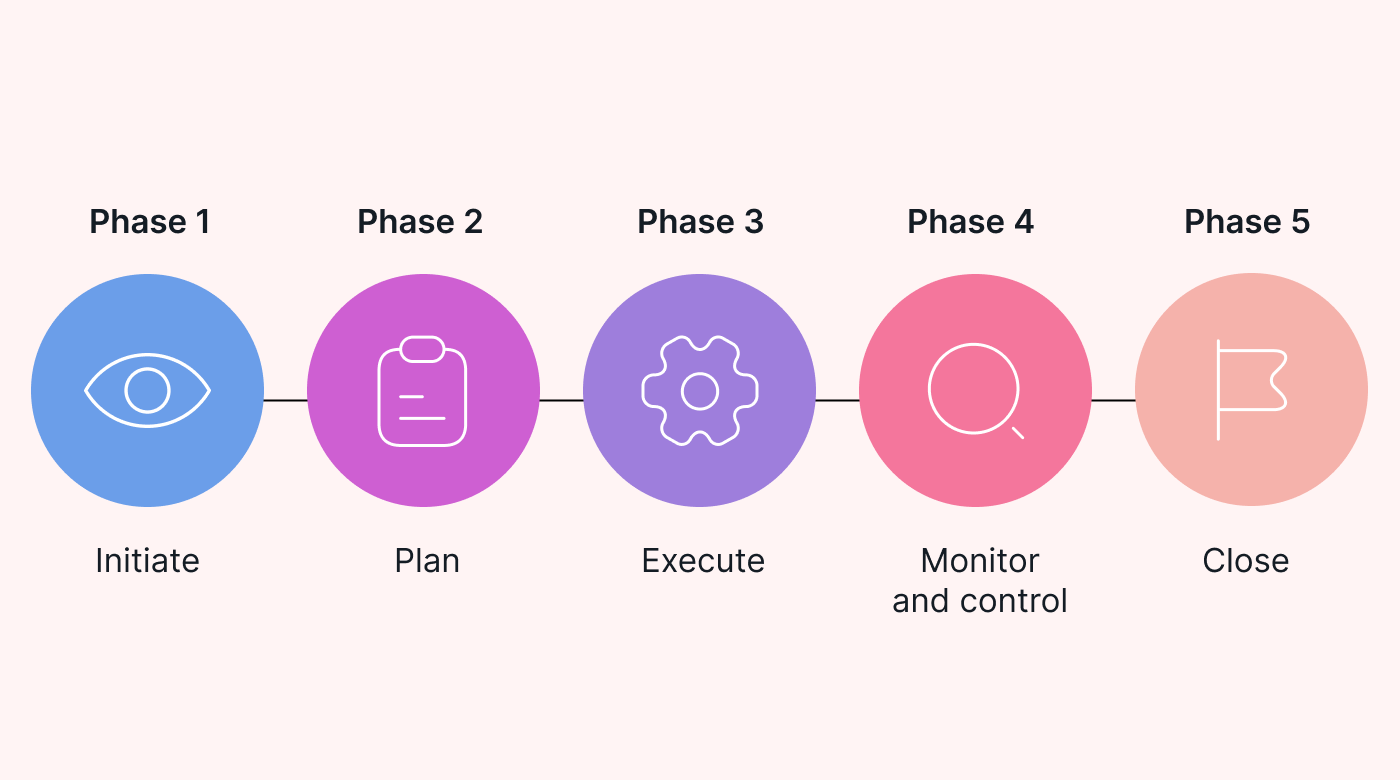 |
Let’s take a deeper look into each phase below.
1. Initiate: setting the foundation for success
During this phase, the key objectives are to:
- Define project scope
- Identify project stakeholders
- Establish a clear understanding of project goals
The initiation phase involves three key activities. These activities include feasibility studies, risk assessments, and creating a project charter:
- Feasibility studies help determine if the project is viable.
- Risk assessment allows project managers to identify potential obstacles and develop mitigation strategies.
- The project charter is a guiding document outlining the purpose, objectives, and initial timeline.
Documentation needed for the initiation phase:
- Feasibility study report
- Risk assessment and mitigation plan
- Project charter outlining objectives, scope, and timeline
Example: A design agency is launching a new client project. The initiation phase would involve a feasibility study to assess if the project aligns with the agency’s abilities. They’d identify key stakeholders and define the project’s scope and objectives. The agency would then create a project charter outlining the project’s purpose, goals, and initial timeline.
2. Plan: developing a roadmap for execution
During this phase, you create a comprehensive roadmap for project execution. The value of the planning phase lies in its ability to provide clarity, direction, and structure to the project.
The planning phase involves several key components and deliverables. These include:
- Defining project objectives
- Identifying project tasks and dependencies
- Creating a project schedule
- Allocating resources
- Developing a communication plan
Additionally, risk management strategies are put in place to mitigate potential obstacles.
Deliverable documentation needed for the planning phase:
- Project plan
- Project schedule and budget with baselines
- Resource allocation plan
- Risk management plan
These documents also provide a blueprint for project implementation in the next phase.
Example: A construction business planning a new project is in the planning phase. At this point, the team uses the project objectives, such as constructing a retail building by a target date. They’d break down the project into tasks, identify dependencies, and create a build schedule. They’d allocate resources, including materials, equipment, and personnel. And they’d create a risk management plan to deal with any problems.
3. Execute: turning plans into action
The execution phase is where the project moves from plan to action. It involves implementing the plans and strategies developed during the previous phases.
 |
During the execution phase, challenges may arise, such as:
- Resource constraints
- Unforeseen obstacles
- Changes in project requirements
It's important to have strategies in place to overcome these challenges. Effective communication, team coordination, and proactive problem-solving are helpful if a problem arises.
Deliverables in this phase often include completed tasks, updated documentation, progress reports, and quality assurance measures.
Documentation needed for the execution phase:
- Task assignments and task execution records
- Updated project documentation
- Progress reports
- Quality assurance measures
4. Monitor and control: Protecting project progress and quality
The monitor and control phase makes sure the project stays on track and maintains the desired level of quality. It runs concurrently with the execution phase and involves:
- Monitoring project progress
- Comparing it against established baselines
- Taking necessary actions to address any deviations
During this phase, you must actively monitor the project's progress. If you identify potential problems early on, you can implement corrective actions to avoid problems.
You also have to track progress against established baselines from the earlier phases. Baselines serve as reference points for comparing actual progress and performance. By regularly comparing actual progress, project managers can identify any variances.
Documentation needed for the monitor and control phase:
- Progress reports and performance metrics
- Risk assessment and mitigation plans
- Issue logs and resolution plans
- Change control documentation
- Quality assurance records and test results
- Baseline comparisons and variance analysis
5. Close: wrapping up and capturing lessons learned
The closing phase of a project is just as important as its initiation and execution. It involves:
- Bringing the project to a successful conclusion
- Tying up loose ends
- Capturing valuable lessons learned
Key elements of this phase include conducting a project review to ensure all objectives have been met. Another element is client approval or sign-off and archiving project documentation and files.
One crucial aspect of the closing phase is capturing lessons learned. It involves reflecting on the project to identify valuable insights to apply to future projects.
Documentation needed for the closing phase:
- Project review and completion checklist
- Client approval or sign-off
- Lessons learned documentation
- Project closure report
How Motion integrates with project management
Motion is an AI-backed task management software that merges with project management practices. It's also a great tool for optimizing project life cycles.
Motion offers a range of features designed to support project management needs. It includes:
- AI task prioritization capabilities
- AI task manager and scheduler
- Time blocking features
- Meeting assistance functionality
- A centralized platform
- Task tracking functions (Kanban boards etc.)
- Resource allocation and tracking features
Motion's features align with the five essential phases of project life cycles. It can provide valuable support throughout each stage.
Leverage Motion for each phase of the project life cycle
Let’s see how Motion can be successfully used through various project lifecycle phases.
1. Initiate: use Motion for meetings and stakeholder alignment
During project initiation, Motion can help facilitate efficient meetings and ensure stakeholder alignment.
The shared calendar feature lets you view everyone’s availability and easily find good meeting times.
Motion also provides a centralized platform for sharing meeting agendas, documents, and updates. This helps cut down on wasted time and keep everything transparent.
2. Plan: use Motion for task management and resource allocation
Motion can assist during the planning phase with task management and resource allocation.
You can use Motion to create project plans, define tasks, and assign resources efficiently. With it, you can easily visualize task dependencies and project timelines.
Motion also enables you to set task priorities, which it will use to help manage your team’s schedules. With its resource management features, you can assign team members to tasks and balance workloads.
3. Execute: use Motion for focused collaboration and progress tracking
During the execution phase, Motion can help with focused teamwork and tracking project progress.
Team members can use Motion to share task updates, documents, and feedback. With Motion's project-focused interface, discussions can be super-focused. Doing this removes unnecessary noise and keeps the conversation centered.
Motion also notifies everyone in real-time about project status updates. So that everyone stays informed about task progress and any changes.
4. Monitor and control: real-time insights and performance with Motion
Motion provides real-time insights and performance-tracking capabilities for effective monitoring and control.
With Motion, you gain immediate visibility into the status of your projects. You can easily track key performance indicators and ensure project objectives are met.
5. Close: use Motion to capture lessons learned
With Motion, you can facilitate meetings and lessons learned during the project closure phase.
You can use Motion’s AI calendar to schedule project retrospectives for everyone involved at the best time. The platform’s documentation capabilities allow you to store and share lessons learned.
From initiation to closure with Motion
The project management life cycle is a rudimentary guide for the execution of successful projects. Each life cycle phase plays a crucial role in effectively meeting project objectives.
Motion seamlessly integrates with all phases of the project management life cycle, offering valuable features. With Motion, you and your project team can streamline workflows and increase productivity. It is a successful tool that many happy professionals use to achieve success across industries.
Sign up for your 7-day free trial.


